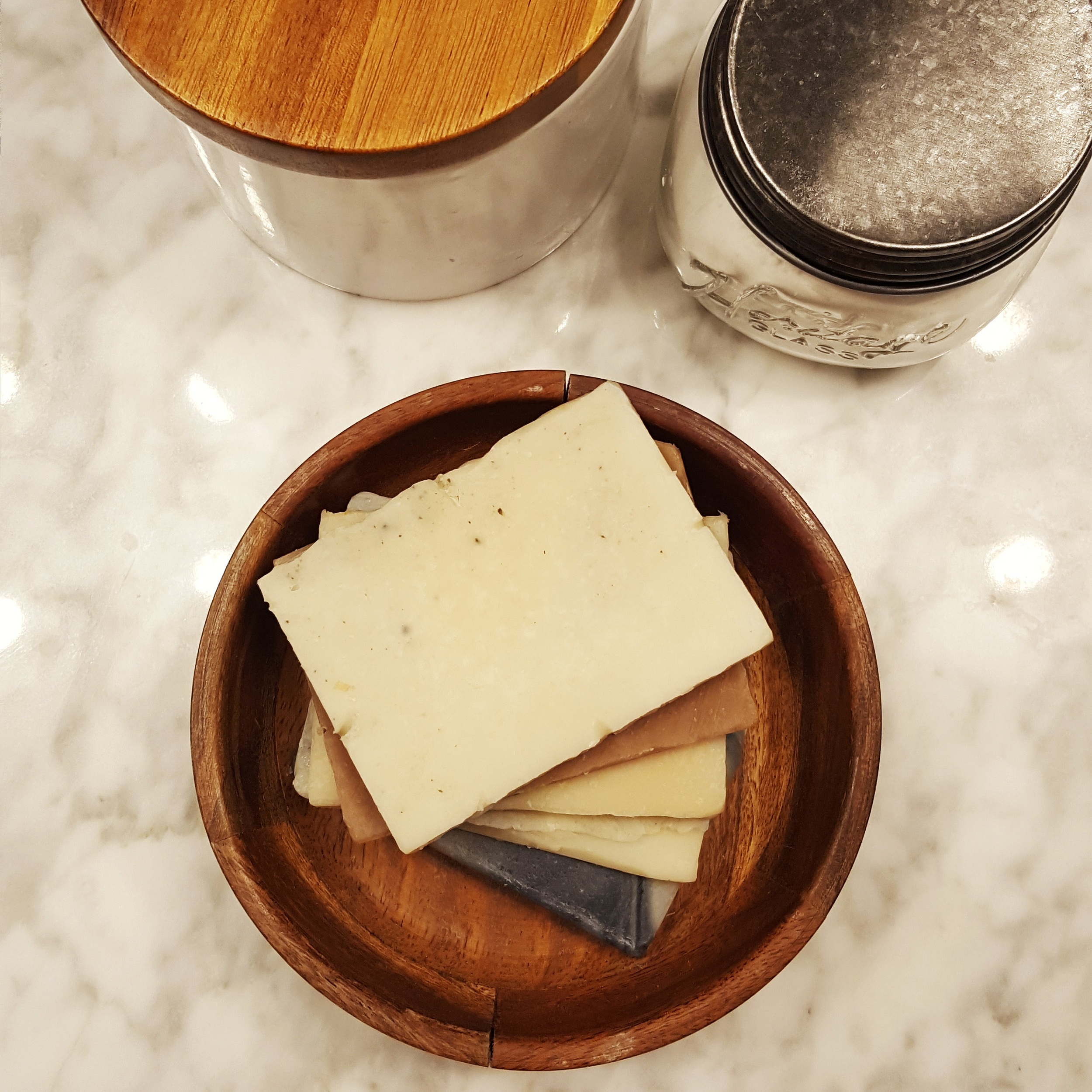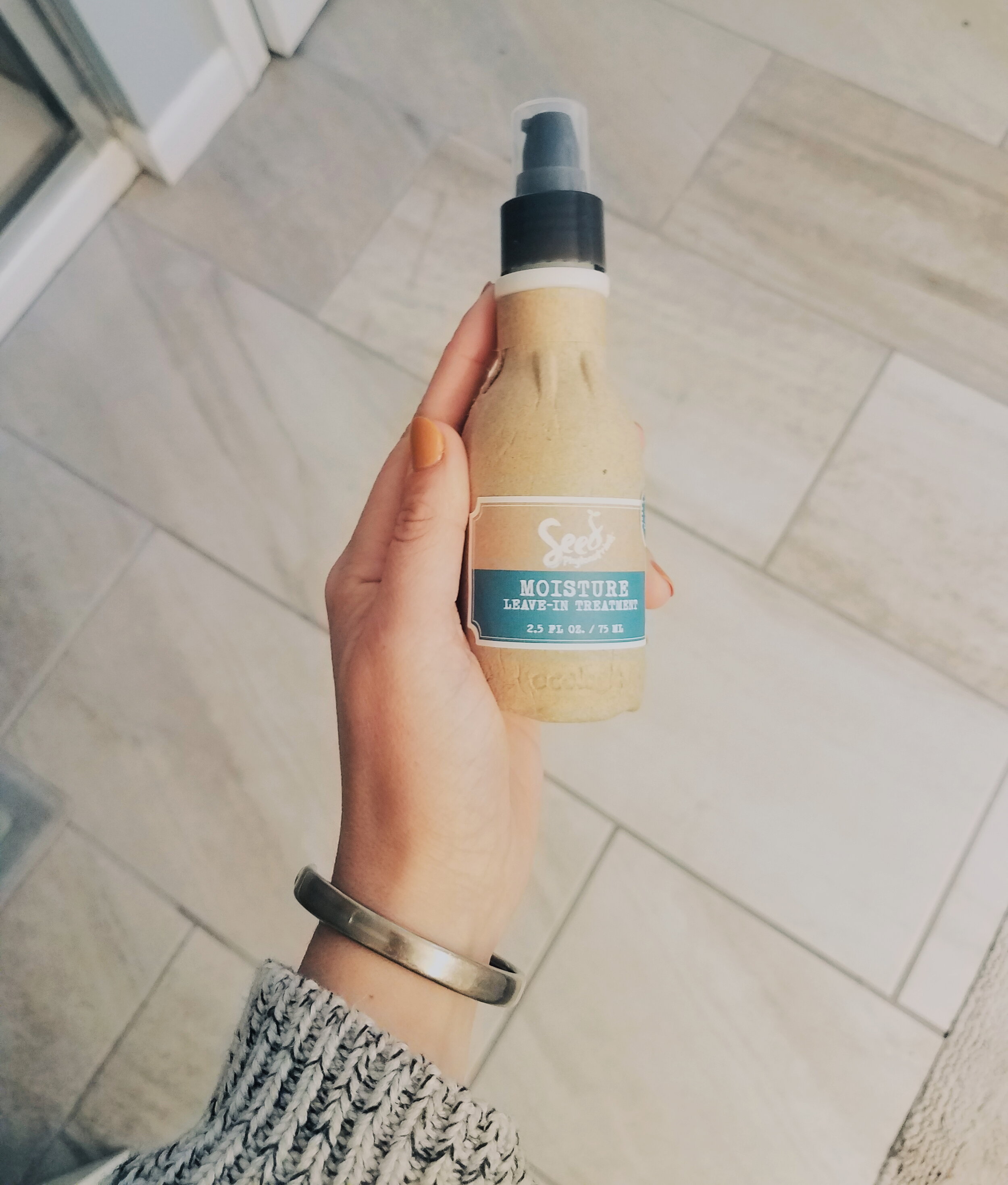Bar Soap & Why I Made The Switch
I remember as a little girl, taking baths at my grandma’s house with a yellow bar of soap. I remember the dark green bath curtain and her saying “rub a dub dub, three men in a tub”. I laugh as I type this, thinking, what a sight that would have been for a 5-year old (or anyone, really).
SOAP, WHAT IS IT?
This seems like a silly question, right? Until you are asked and you actually don’t know. I have explored many DIY beauty and body products, but soap was new to me. So, when I went to make my own bar soap last weekend, I realized I knew nothing about it — which seems absolutely crazy given this is something I use every day.
Soap by definition is the combination of natural oils and fats (plant or animal-based) and an alkali. The most common alkali used to create soap is Lye — a caustic liquid with the potential to burn organic tissue. Burns. Organic. Tissue. Honestly, I read that and said forget it. Homemade soap might not be in the cards for me (yet).
While Lye curbed my enthusiasm to create my own soap, it didn’t stop my curiosity. Can you make soap without Lye? If Lye has such dangerous capabilities, should I really be using it? etc. etc. My angst was settled once I learned some of the basics of soap making. According to the FDA, you cannot make soap without Lye. While yes, Lye, is a key ingredient in the creation of soap, soap does not contain Lye. Once you mix your natural oil/fat with an alkali (Lye), neither of the natural ingredients exist anymore — the chemical reaction between the two have now created soap and natural glycerin.

Ft. Goose Creek Soap in a wooden bowl I thrifted for 50 cents from Goodwill
Not only is bar soap super aesthetically pleasing, it’s the more sustainable choice for consumers. When it comes to creating liquid soap versus bar soap, liquid soap uses about five times as much energy as bar soap and twenty times as much energy for packaging. Speaking of packaging, most bar soap requires minimal or no packaging at all in comparison to liquid soap — which is almost always packaged in plastic. Half of all plastic waste we produce comes from plastic packaging. In 2015, for instance, that equated to 141 million metric tons. Since I had decided I wasn’t quite ready to mix and mingle with Lye, I decided to purchase bar soap from a local vendor, Goose Creek Soap, at RF Home Co. If you are looking to purchase bar soap, there are many options. I recommend trying to your local farmer’s market first (that is where I first heard of Goose Creek Soap). You can also check out a few mainstream shops that are committed to sustainable beauty and body products, such as Lush. Not only are their products vegetarian and free of animal testing — they also allow you to shop package free! It is estimated that only 9% of all plastic is recycled and only 1 in 5 people consistently recycle items from the bathroom. Going plastic free with bar soap is one of the easiest ways you can begin to eliminate plastic use in your daily life.
WHAT’S NEXT?As I was researching, I came across bar shampoo and conditioner. Lush has produced a shampoo bar that can outlast two to three bottles of their liquid counterpart — with one bar lasting up to 80 washes. It is estimated that more than 500 million shampoo bottles could be ending up in landfills annually. Just this past weekend, I threw out 6 or so empty plastic bottles from my shower - body wash, shampoo, conditioner, face wash, you name it. Although I recently made a fresh bottle of homemade shampoo, I think I will explore the bar shampoo option next. Stay tuned.
UPDATE: SHAMPOO & CONDITIONER
I initially wrote this post almost three months ago. At the time, I had just started using bar soap in place of shower gel and liquid hand soap. Since then, I have also replaced my shampoo and conditioner with plastic-free alternatives. If you read above, you saw where I attempted to make my own shampoo, let’s just say I decided to leave shampoo making to the professionals. I am sure I added too much of something, but my DIY version left my hair really oily. So, my second plastic-free, natural shampoo attempt included the use of Lush’s Honey I Washed My Hair shampoo bar ($10.95/1.9 oz). This product smells great and comes with zero packaging. I have naturally thick, curly, and coarse hair (so, you would think my super moisturizing DIY version would have helped) and unfortunately, this bar dried out my hair so much (too hot, too cold, starting to feel like goldilocks and the three bears over here - also just noticed I have referenced two childhood stories in one post and I don’t even have children, SORRY). Anyways, Kohl used the Lush bar and it worked just fine for him — this is to say, it might take you a few times before you find what product works best for your hair.

Lush’s Honey I Washed My Hair Bar Shampoo
After 12 weeks (and with some of the bar still left), I had to switch to something else because my hair could not take it anymore. So, while Kohl finishes using our Lush bar, I decided to try a salon quality shampoo and conditioner from HiBar. I purchased the Moisturize Shampoo and Conditioner set ($26.50/3.2oz Shampoo Bar; 2.9oz Conditioner Bar). Although it was not package-free, HiBar does come in plastic-free, recyclable and compostable packaging. Each HiBar is said to equal 16oz of its liquid counterpart. I have used my new bars for only 3 washes and I am SO impressed. They smell amazing and I could tell an immediate difference in my hair after just a few washes.

HiBar’s Moisturizing Conditioner Bar
In addition to my new bars, I have also started using a Moisturizing Leave-in Treatment from Seed Phytonutrients. Previously, I used It’s a 10 Miracle Leave-in Conditioner, but… you know, plastic. I randomly found this product at our local Wholefoods, but you can also order it online for $26.00 (2.5oz). One of the coolest things about this product? It’s packaged in shower-friendly recycled paper! AND once you are done, you will discover a beautifully-designed packet of heirloom herb seeds! Through Seed Phytonutrients I learned that over the past century, we have lost more than half the world’s food varieties. By practicing seed saving, Seed Phytonutrients states that we can “create diversity in plant species that help protect them from pests, diseases and changes in climate.”

Seed Phytonutrients Moisturizing Leave-in Treatment
Last time I wrapped up this post, I mentioned Shampoo and Conditioner being next on my list to try. Now that I have started to tackle that one, my next swap will be dish soap. Right now I have my eyes on No Tox Life’s Dishwashing Block.
Have you tried switching up your soaps to something more natural or plastic-free? I would love to hear about your recommendations in the comments OR if you have any questions about my experience, I am happy to answer those too!






